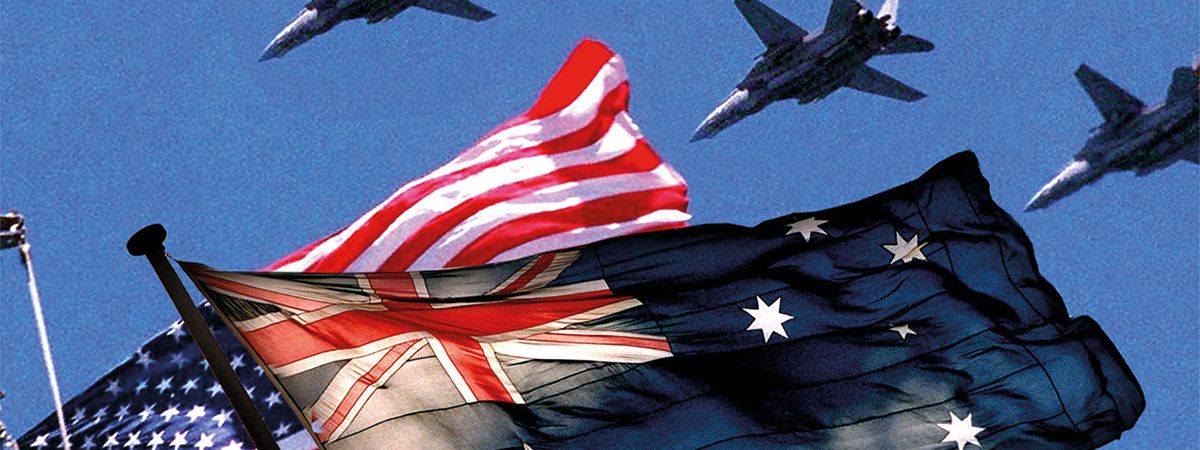Before I went to Hiroshima I did not know the word hypocentre. It didn’t exist for me until I found it on a wall in the Hiroshima Peace Memorial Museum, past the diorama of children with charred skin flaps hanging from their outstretched arms. But there, hanging a precise distance above the clean model of a cityscape, was a polished plastic red ball: the hypocentre of the nuclear fireball of August 1945.
Before I went to North Korea and stood in a red-lit burial chamber to stare at the forever-set face of Kim Jong-il I had never felt the chill of a regime that could pull you aside, beat out your teeth and swallow you whole. Under the attentive gaze of his son’s soldiers and henchmen, in that high-vaulted room displaying his body, I understood what it was to feel insignificant, impuissant – my existence the whim of someone else’s machinations and politics.
Before I went to the Solomon Islands I had never peered down into the hull of a warship sunk with all hands and understood what it meant to be part of a great armada engaged in a desperate struggle. Nor seen what it meant for a finely crafted military campaign to be suddenly stopped, with either stratagem or luck snuffing out the lives of the defeated.
Before I went to Beirut I had not understood that in the space of two decades a beautiful city could decay, wracked by war and ruin, riven by rivalries. That law and order and commerce could give way to rule by gang. That life could mean rising every day to look south at a neighbouring valley with pure hatred.
Before I went to Iraq I had not tasted dust swept by desert winds from the top of a grave packed deep with hundreds of bodies – the remains of those who had refused to go on fighting Saddam’s war against Iran. Nor sipped cool water inside the armour of a vehicle driving through a suburb thick with fighters wanting nothing more than to kill people like me.
Before I went to Afghanistan I had never listened to men calmly discuss the calibrated effect of their plans for the casual murder of civilians.
And before I came home to Australia from these places I had never really understood what it means to live in a place of bright skies and open minds. When you live in a country like ours, the dirty business of war is a stranger. That is the blessed legacy of a place where soldiers are rarely seen, and then only on parade. Where war means Anzac Day, and Anzac Days are all the same. There are few moments in modern Australia when you might pause to ask the most consequential of questions – a question that probes a nation’s heart, scours its mind and resets the rhythm of its citizens’ lives.
What is it that we are willing to fight for?
For what principles, what positions, would we stand up and never give in, no matter how great the struggle and how large the cost? And just as importantly, for what would we not fight? On what issues would we stand down, pack up our arms, decide to compromise or to walk away from a fight that is not ours? It is the most important question that governments and the people who elect them might ever have to answer. It is a question that is becoming more difficult for Australians to consider.
For much of Australia’s history, the sliding and shifting tectonic plates of geopolitics have positioned our continent far from global strife. And in any case, we did not have the authority to decide on war, vested as it was in the hands of the colonial redcoat governors and successive British governments. The question of organising for national defence was at the heart of Henry Parkes’ Tenterfield Oration and the planning for federation. But Australia herself only decided for war after the Statute of Westminster and the successive declarations of our governor-general in 1942 against Bulgaria and Thailand. Three years later the power to declare war, outside of an attack on our own borders, was largely surrendered to the United Nations. In the years since, some would argue, the decision has been ceded to our great ally the United States.
Perhaps for many Australians the answer is simple. We fight for all that lies within the white wash of waves breaking against our shore, the boundary of our sea-girt nation. That line on our mental map is clear and stark, the idea of physical invasion a natural concept for a country schooled to picture history as a series of landings of boats ashore: be it Botany Bay or Gallipoli. But that mental line has moved further and further outwards, pushed by myriad factors since 1945. The 1982 United Nations Convention on the Law of the Sea stretched the line far out beyond the crashing surf and into an exclusive economic zone extending 200 nautical miles in all directions. A deep blue inkblot of sovereignty leaches into the Indian Ocean, north to Timor, east by New Zealand and the Pacific Islands, south across the Antarctic. At 27.2 million square kilometres, Australia’s jurisdictional claim on the earth’s surface is the largest of any country in the world.
The ambitions of a prosperous country in a globalising world blur and broaden the lines of our security, too. A country like ours, dependent on trade across the oceans, necessarily has veins that extend inwards, outwards and across borders: free-flowing lines carrying energy, food, ideas, stories and relationships. An interconnected country linked by cables draped across the ocean floor: digital highways carrying the traffic to connect our financial transactions as well as our medical researchers. Modern Australia breathes because planes can ascend from Tullamarine, circle the planet and glide to a landing at Heathrow, John F. Kennedy or Shanghai. Because oil can decant through the Strait of Hormuz into Singapore and Taiwan, then trickle down through the Indonesian archipelago to fill sedans and shops and shelves. Because satellites above can blink signals scheduling trains across the Nullarbor or surveying fires in the Pilliga. Our way of life, on reflection, is a surprisingly intricate thing. An exquisite thing, dependent on a fine global web of collaborations. A system of transactions anchored by trust and stability. Australia’s security depends on lifelines that run from here across the planet.
For all the wonder of our connected, enlightened, prosperous age, the fundamental tenets of war remain largely the same as when laid down by Clausewitz, the German who is to war what Adam Smith is to economics. War is a political act, the deployment of violence to achieve an aim or avert a catastrophe. The character of warfare, though, is changing fast. The great strategists will tell you that warfare is evolving to take new and often unexpected forms: the horrors of ISIS are but one incarnation of the complexities and potency of newly globalised violence. But there is also a spectral reappearance of forms of violence long thought vanquished. The possibility of war between major powers, slight though it might be, is creeping back into the deliberations of Moscow, Beijing and Washington. The kind of war our grandparents faced has not yet been eradicated from our lives.
It would not be right to say that Australians cannot think about war when they need to. We have done so with passion, evidenced as much by the graves strewn through Western Europe as by the hundreds of thousands who marched in our streets both for East Timor and against Iraq. Some of our fiercest public debates have been on issues forced by war: conscription, nuclearised alliances, the dilemmas of choosing between forward defence and self-reliance. On whether we should meet the problems of the world head-on, or wait for them to make their way south. These debates are foundational to the way we think about war when provoked, but some of their core assumptions are now ageing badly. Tens of thousands of Australian soldiers have deployed to Iraq, Afghanistan, East Timor, the Solomon Islands and beyond in the past twenty years. The histories of these conflicts are just now beginning to be written. These conflicts have rightly shaped the way the public and parliament think about war – that is, when they think about it at all. But have they shaped our deliberations on war in the right ways?
It is a trope of history to criticise the generals who prepared to fight the last war and were caught out by new battlefields they could not comprehend. The French officers of World War I, resplendent in their scarlet pantaloons on battlefields sown grey with munitions and mud. The Maginot Line and its ineffectiveness against the armoured Blitzkrieg columns of Nazi Germany. But publics, too, can assume the next war will be like the last one.
In Australia’s bright and blessed circumstances today, we rarely think of war: it is something we go to, not something that comes to us. It seems we often shrink from talking about war in any detailed way, as if to speak of evil might set us on an inevitable path towards it. And in the few moments when we publicly discuss or politically deliberate on new wars, our involvement in Iraq seems to set the template for our imagining of what war should or should not be. That’s problematic, because warfare is rapidly evolving and remains a possibility – particularly within our region. Many of the intellectual frameworks and assumptions we retain from Iraq no longer hold, particularly those regarding the United States. As the Australian Defence Force spends billions of dollars on new equipment and facilities, building a grander military to insure against an uncertain future, the public remains largely mired in the past, blind to the new realities of strategic rivalry between our friends and allies. Our mechanisms for going to war lack the institutional rigour necessary to navigate a more complex world, and our decisions about conflict are not grounded by public trust and democratic legitimacy. We need urgently to re-engage with the problems of war, and to rethink just how it is that we choose whether we fight or not.
There is, perhaps rightly, little in the cabinets of the Hiroshima Peace Memorial Museum to explain how Hiroshima came to have a hypocentre. It is only as you leave the building that you find a trace of historical context. “The conflict began,” reads a small plaque beneath interviews with atomic survivors, “when the tensions between Japan and China of 1931 boiled over in 1937.” It is a salient reminder that the seeds of war are usually sown long before any crisis, and that the signs of war may be apparent years in advance. Thinking seriously about war, intelligently preparing for the possibility, does not inevitably set us on a path towards it. But it does mean we do not approach problems unprepared.
My regimental commanding officer in Southern Iraq gave me a piece of advice before my troop headed out on our first mission: move like doves, think like hawks. It has stuck with me for the last decade; it should stick with you for the next one.
CONTINUE READING
This is an extract from James Brown's Quarterly Essay, Firing Line: Australia's Path to War. To read the full essay, subscribe or buy the book.
ALSO FROM QUARTERLY ESSAY












